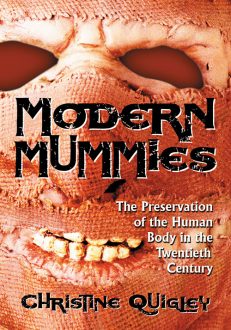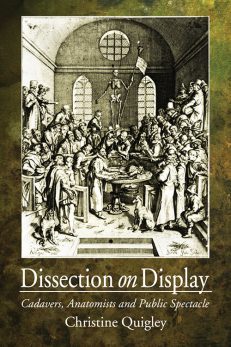Dissection on Display
Cadavers, Anatomists and Public Spectacle$29.95
4 in stock (can be backordered)
About the Book
Since Herophilus, the “father of anatomy,” performed the first public human dissection in the third century B.C.E., audiences have been spellbound by the cutting apart of cadavers. This volume traces the past and present of public dissection, from Herophilus’s first cuts to the revival of anatomy as entertainment through spectacles like Gunther von Hagens’ Body Worlds, including the attacks on anatomy in the Middle Ages, the influence of Renaissance anatomist Andreas Vesalius, the procurement of bodies through execution and body snatchers, and the withdrawal of dissectors behind medical school doors in the early 20th century. It reveals that the anatomical spectacle is not new, but has remained in the gray area between education and entertainment for centuries.
About the Author(s)
Praise for the Book
- “This well researched historical account of the phenomena of public dissection traces the gruesome spectacle from Heriophilus to modern day exhibits…a comprehensive chronology…offers insight into the evolution of dissection in the public sphere and all the surprising ways in which it has manifested”—Reference & Research Book News
- “Dissection on Display is an astonishingly interesting and good book—learned, well-written, and filled with quick, not dead, anecdotes. Before reading this book, I had not thought about the distinction between an autopsy and a dissection. This is a fine scholarly book, one that informs and entertains and the combination makes it a rarity.”—Samuel Pickering, Professor of English, University of Connecticut
- “What a book! Since I have a personal interest in the evolution of the autopsy, I know what an enormous effort must have been expended in gathering the often obscure sources. Yet the presentation of them reads more like an action, especially the section on ‘bodysnatching’…historically, dissection with the anatomic knowledge gained must precede the era of the autopsy. This is where this book comes in…one can easily see the enormous vacuum the book fills, especially the medieval period…sincerest congratulations for an enormous contribution to the history of dissection.”—Art Aufderheide, professor emeritus of pathology, University of Minnesota.
Bibliographic Details
Christine Quigley
Format: softcover (6 x 9)
Pages: 224
Bibliographic Info: 31 photos, bibliography, index
Copyright Date: 2012
pISBN: 978-0-7864-4429-8
Imprint: McFarland
Table of Contents
ACKNOWLEDGMENTS vii
PREFACE 1
DEFINITIONS OF DISSECTION AND AUTOPSY 9
DISSECTION CHRONOLOGY 13
INTRODUCTION 17
1. Anatomists as Procurers of Cadavers 35
Alexander Monro Primus (1697–1767) and His Legacy 58
John Hunter (1728–1793) and His Brother 64
Sir Astley Cooper (1768–1841) and His Boast 70
2. Anatomists as Demonstrators and Educators 75
Mondino de Liuzzi (c. 1270–1326) and His History 90
Andreas Vesalius (1514–1564) and His Modernity 93
John Bell (1763–1820) and His Illustrations 98
Henry Gray (1827–1861) and His Textbook 101
3. Anatomists as Preparators and Collectors 105
Frederik Ruysch (1638–1731) and His Assemblages 109
William Cheselden (1688–1752) and the Skeleton 121
Clemente Susini (1757–1814) and the Anatomical Waxes 125
Honoré Fragonard (1732–1799) and His Preparations 138
4. Anatomists as Superlatives and Showmen 144
Nicolaes Tulp (1593–1674) and His Fame 158
Georges Cuvier (1769–1832) and His Venus 160
Thomas Pettigrew (1791–1865) and His Mummies 166
P.T. Barnum (1810–1891) and His Hoax 178
Gunther von Hagens (1945– ) and His Spectacles 180
CONCLUSION 197
BIBLIOGRAPHY 205
INDEX 215









